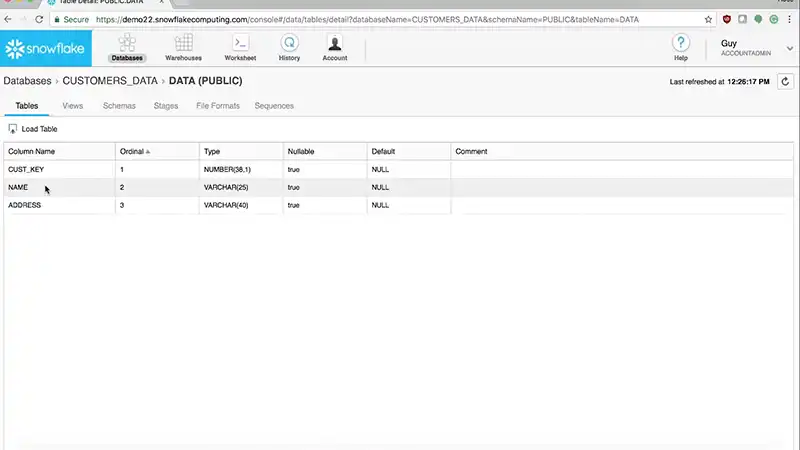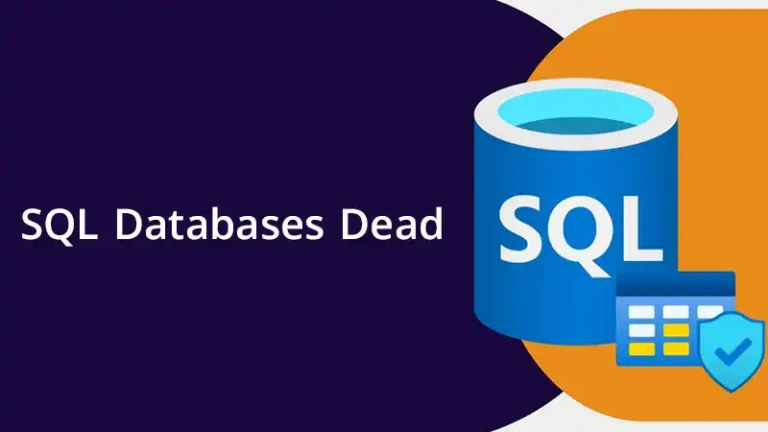What Kind of Database Is Snowflake? Easy Explanation
With an innovative approach to building data warehouses, Snowflake stands its ground as a powerful tool for harnessing cloud data. But what kind of database is Snowflake, and how does it differ from traditional databases?
Snowflake is a database built on cloud platforms like Amazon AWS, Microsoft Azure, and GCP. Due to its unique multi-cluster architecture, it provides the benefits of cloud computing and storage without missing out on traditional database features. Sounds overwhelming? Let’s break things down for you.

So, What Is Snowflake?
Snowflake is a cloud-based data warehousing platform designed to handle and analyze large volumes of data without compromising speed and scalability. It differs from traditional relational database management systems or NoSQL databases with single-cluster architectures. Instead, it uses a multi-cluster shared data structure, where each cluster runs independently but can access the same data.

Snowflake provides the best of both worlds by isolating computing from storage. Doing so differentiates Snowflake from similar platforms like Redshift, which merges the two and requires you to scale up resources as your workload increases.
Is Snowflake a SQL or NoSQL Database?
The core architecture of Snowflake categorizes it as a complete SQL relational database. Thanks to its columnar storage model, it is compatible with tools like Tableau and Excel that appeal more to the user.
With its own query tool, Snowflake supports multi-statement transactions, full DML, and other features you usually get in an SQL database. But it doesn’t stop there, offering you a ton of additional, and in most cases, better features.
Snowflake vs Traditional Databases
Snowflake was built from the ground up to make the best use of cloud computing resources and scale horizontally and vertically. Let’s look at how it stacks up against databases we’ve known for ages.
Effortless Maintenance and Administration
While traditional on-site solutions can sometimes be hard to manage, Snowflake does not require any management from your end. As it handles all infrastructure-related tasks by itself, you, as an end user, can focus more on what’s important – data and analytics. Hence, it also eliminates the need to appoint database administrators or monitor query performance.
Moreover, Snowflake’s dynamic caching system stores query results for 90 days if you use the enterprise edition. Therefore, matching a new query result to existing ones requires zero computation, meaning zero overhead.
Seamless Scaling
Traditional databases often struggle to handle sudden increases in workload. But Snowflake cleverly separates storage and compute management so you can scale up computing resources without increasing storage. And it lets you do all these with no service interruption whatsoever. The rollback option works seamlessly as well.
However, Snowflake makes it even more hassle-free with its auto-scaling feature that dynamically opens or closes compute clusters to match requirements. This feature comes in handy when performing resource-intensive tasks. There’s also an auto-suspend function to save resources not in use.
Semi-Structured Data Handling
Unlike traditional databases that focus on structured data, Snowflake can handle all types of data generated through your business. It lets you load semi-structured data (JSON, XML, Avro) but not necessarily in a tabular form. Using a unique data type called VARIANT, Snowflake directs both structured and semi-structured data to the same destination.
Besides, it parses semi-structured data in a relational structured format for efficient storing. By extracting and encrypting metadata, Snowflake lets you run queries on semi-structured data like you would run them on structured data.
Accessibility and Concurrency
Snowflake database uses a multi-cluster shared data architecture to provide quick response and concurrent query processing. As a result, multiple users and workloads can run simultaneously without performance degradation.
While with traditional databases, administrators have to set up multiple data warehouses, Snowflake uses virtual data warehouses. It can provide separate small, independent segments inside a larger platform for better concurrent operations.
Commonly Asked Questions and Answers
Is Snowflake a structured database?
Snowflake lets you use SQL on both structured and semi-structured data. You can use the same query on them to perform operations like join, compare, and calculate. Snowflake has also introduced accelerated time-to-value to unstructured data so you can store, process, and share unstructured data.
Is Snowflake on AWS or Azure?
Snowflake is available on multiple cloud platforms, including AWS, Azure, and Google Cloud Platform (GCP). Its multi-cloud strategy makes it a flexible solution, as users can choose their platform of choice to host their data warehouse.
What kind of database does Snowflake use?
Snowflake uses a hybrid architecture that combines traditional shared-disk and shared-nothing models.
Conclusion
To conclude, Snowflake is a cloud-hosted relational database that abstracts the complexities of its traditional counterparts, such as indexing, partitioning, and tuning. So, what are your thoughts on this database of the cloud era? Can Snowflake add value to your organization’s workflow? Let us know in the comment section below.


![Is xp_cmdshell Secure? [4 Insecurities and Fixes]](https://www.iheavy.com/wp-content/uploads/2024/08/cmdshell-Secure-768x432.webp)



